Trump’s NATO demands spark tensions: Can NATO survive without US leadership?
Trump’s push for higher defense spending and direct discussions with Putin have raised fears about NATO’s future and the US’s role in the alliance, leaving European countries divided and uncertain.
1/13

Concerns grow over the US pulling back from NATO’s defense strategy. Here's why (Image: News18 creative)
2/13
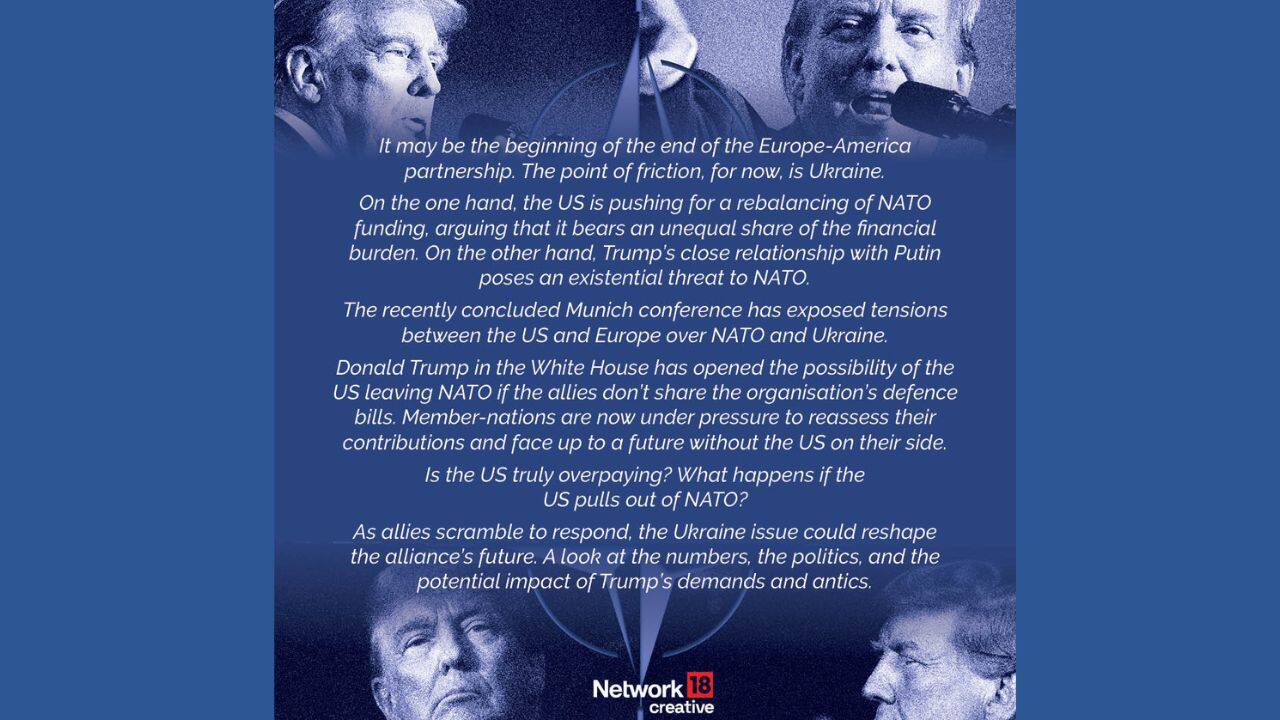
Trump’s stance on NATO, including demanding a more equal financial burden and his direct discussions with Putin, has created friction among European allies. The question arises whether the US is overpaying for NATO, and what the consequences would be if the US were to exit the alliance. This also raises concerns about the financial implications and the future of NATO’s dynamics.(Image: News18 creative)
3/13

NATO, the North Atlantic Treaty Organization, was established in 1949 in Washington DC, with 12 founding countries: Belgium, Canada, Denmark, France, Iceland, Italy, Luxembourg, the Netherlands, Norway, Portugal, the United Kingdom, and the United States. (Image: News18 creative)
4/13

Today, NATO has 32 members across Europe and North America. The alliance originally consisted of 12 members, but after the collapse of the Soviet Union in 1991, many Eastern European countries, such as Albania, Bulgaria, the Czech Republic, Estonia, Hungary, Latvia, Lithuania, Poland, Romania, and Slovakia, joined. (Image: News18 creative)
5/13
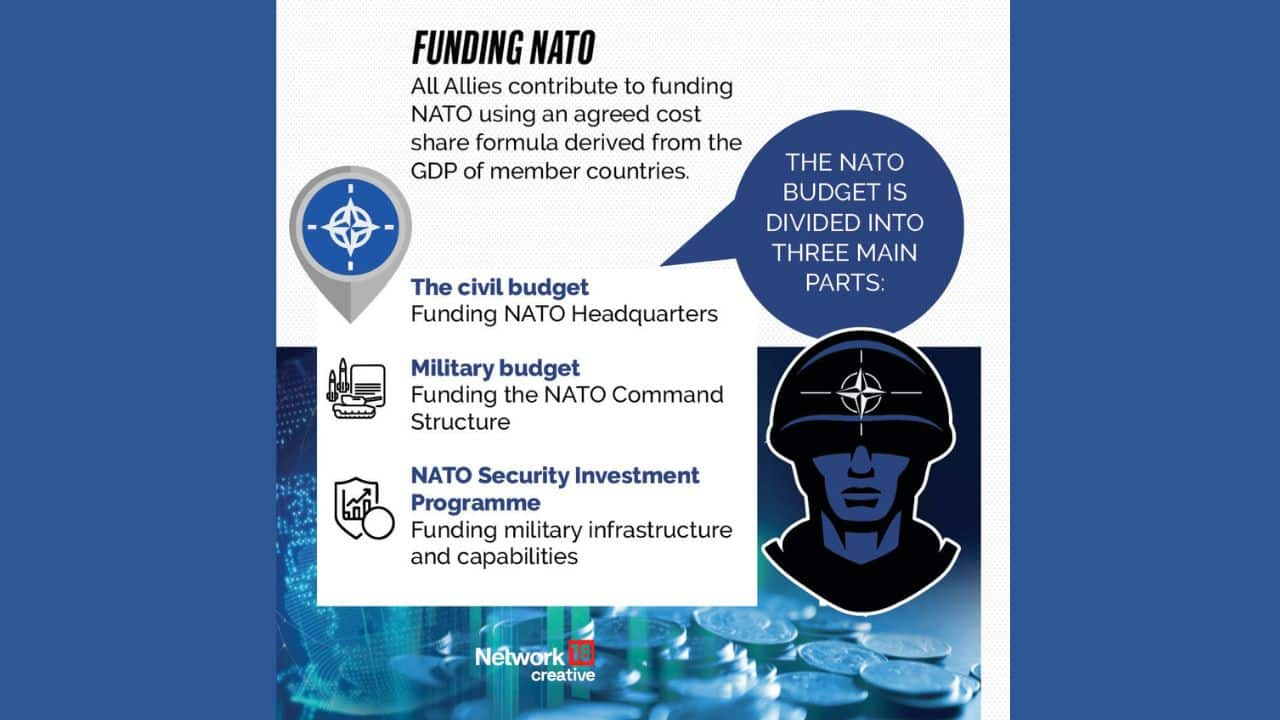
NATO members contribute financially according to a cost-share formula based on each country’s GDP. The NATO budget is split into three main categories: the civil budget (for NATO headquarters), the military budget (for the NATO Structure Command), and the NATO Security Investment Programme (for military infrastructure and capabilities). (Image: News18 creative)
6/13

In 2006, NATO introduced a guideline encouraging members to spend 2% of their GDP on defense, reflecting a country’s commitment to NATO and collective defense. Trump recently suggested that European NATO members should increase this spending to 5%. (Image: News18 creative)
7/13

Fourteen countries contribute less than 1% of the NATO budget, with Montenegro contributing just 0.02%, Iceland 0.06%, North Macedonia 0.07%, and others like Estonia, Latvia, and Luxembourg contributing even lower shares. (Image: News18 creative)
8/13
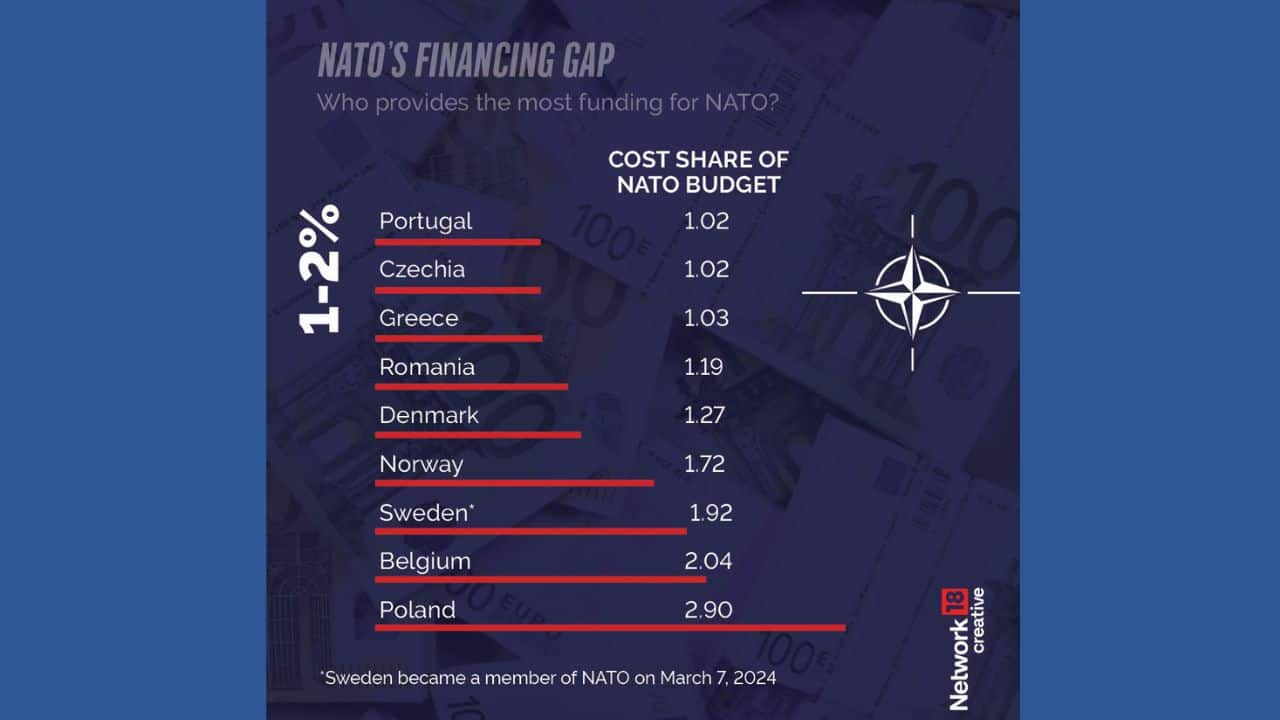
Some NATO countries, such as Portugal, Czechia, Greece, Romania, Denmark, Norway, and Sweden, contribute around 1% to NATO’s budget, ranging from 1.02% to 1.92%. (Image: News18 creative)
9/13

The countries contributing more than 2% of NATO’s budget include Belgium, Poland, the Netherlands, Turkey, Spain, Canada, Italy, France, the UK, and the US, with the US and Germany contributing the largest shares at 15.88%. (Image: News18 creative)
10/13

Trump has stated that the US covers a significant portion of NATO’s defense costs. In 2024, NATO’s total military expenditure was $1,185 billion, with the US contributing $430 billion and Europe and Canada providing $755 billion. (Image: News18 creative)
11/13
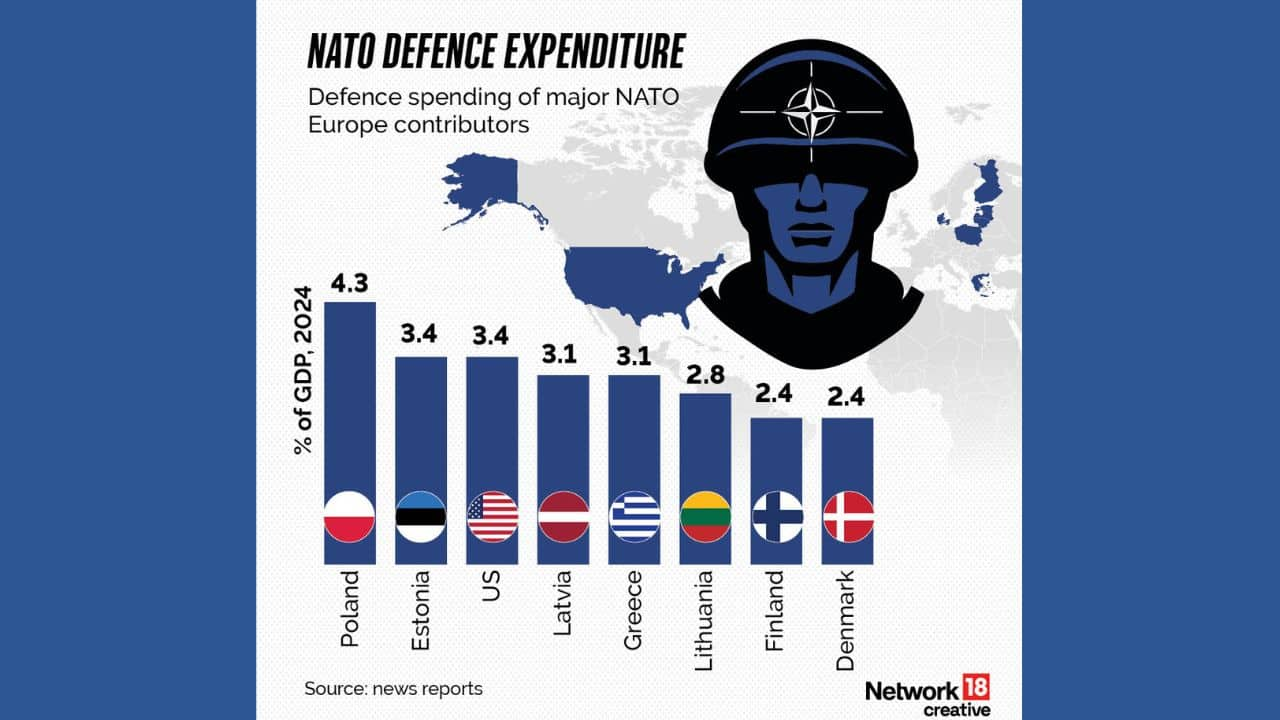
A graph shows the defense spending of key European NATO members, with Poland leading at 4.3% of GDP, Denmark at 2.4%, and the US at 3.4%. (Image: News18 creative)
12/13

As NATO's most powerful member, the US has a leading role in its defense strategy. Recently, US Defense Secretary stated that American troops would not join NATO-led peacekeeping missions in Ukraine or defend European countries in the event of a Russian attack. Trump’s direct talks with Putin on Ukraine further heighten European concerns. (Image: News18 creative)
13/13
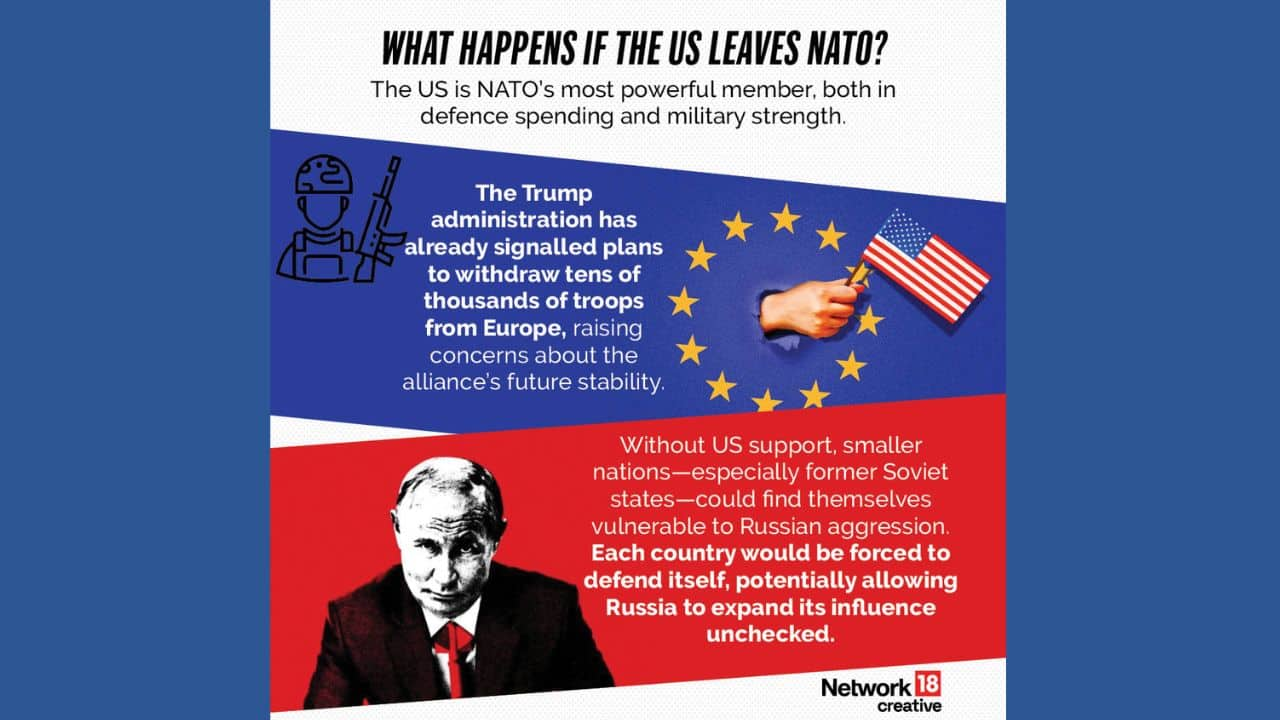
If the US were to withdraw its support, smaller NATO countries—particularly those on the former Soviet Union’s borders—could become vulnerable to Russian aggression. These nations would likely need to defend themselves, which could allow Russia to expand its influence without resistance. (Image: News18 creative)
Discover the latest Business News, Budget 2025 News, Sensex, and Nifty updates. Obtain Personal Finance insights, tax queries, and expert opinions on Moneycontrol or download the Moneycontrol App to stay updated!





